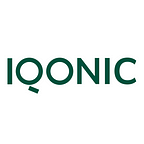The Power of Teledermatology
A doctor’s appointment simply via mobile phone, without long waiting times — that sounds great! Telemedicine services have become increasingly popular in recent years, especially in the field of dermatology.
Critical voices, however, say that such a digital consultation is no substitute for a visit to the doctor. They also fear that the work on the remote consultations distracts doctors from their work in the practice.
Therefore, we asked ourselves: What are the chances and limits of teledermatology? How efficient does it actually make doctors? And does telemedicine really have to replace the doctor’s appointment?
To find out, we spoke to an expert in the field: Dr. med. Philipp Marcel Buck, a second-generation dermatologist with a focus on modernising dermatology through digitalisation and artificial intelligence — and partner of the SQIN app.
Dr. Buck, the most important question first: Teledermatology is supposed to relieve doctors and patients. Does it really do that or does it distract you from your patients in the office?
Basically, there are several advantages of teledermatology that do not distract me from my work in the doctor’s office, but actually enhance it instead.
One is the follow-up of patients who have already been to see me. In order to assess whether the treatment is working, I don’t necessarily have to see them in person again— a picture and the chat are often enough. This can already relieve the waiting room — and it is also more economical.
Secondly, and that is the core of teledermatology, is the triaging of patients. It is difficult to tell how severe a case is by talking on the phone — with images and additional queries, it is possible to assess this more quickly and reliably. This way, patients who urgently need help get an appointment faster. Patients whose symptoms occur in flare-ups, for example, are often scheduled for appointments just when the acute symptoms have already eased — this can also be avoided. Others can be told if it is really worth travelling 100km to see a specialist or if they can get help elsewhere, too.
In turn, minor diagnoses, for which a picture is enough, can directly be advised and treated digitally.
So teledermatology doesn’t distract you — but does it really make you more efficient?
Yes, it does. If the technical conditions are right and the patients are already well preselected on the doctor’s interface, then I can work very quickly and effectively via teledermatology. We are talking about one minute per patient.
However, it is important that we do not (only) offer video appointments. These are also time-limited! With a chat function, instead, it is possible to individually adjust when cases are dealt with.
That is exactly the goal of teledermatology — we are not going to replace the dermatologist’s appointment, we are just taking away mindless work from the resident doctors. Someone who has completed 11 years of specialist training should not only be there to treat blackheads. But how are patients supposed to know whether they need a doctor or not? That is why telemedicine — as described above — can make the work of dermatologists more efficient and create more free appointments in practices. This is also good for the patients!
What are the opportunities and potentials of teledermatology — what are the limits and risks on the other hand?
Clearly, it helps patients who have a high inhibition threshold to go to the doctor, for example. They too can get a diagnosis by means of telemedicine. Secondly, we can actively tackle a bigger societal problem: the (specialist) doctor shortage. Sooner or later, we cannot avoid using technology to combat the shortage of doctors — even private patients now have a hard time getting an appointment. That is why it is important to actively relieve the doctors who are still around and make them more effective.
Let’s move on to the limitations: of course, not every skin disease can be detected by image, let alone treated. That’s why it’s important to ask for more information in telemedicine treatment, such as pain or changes over time.
In general, you need a sensitivity to which topics can be covered digitally. Of course, skin cancer cannot be cured on an outpatient basis, just like some other diseases. Diseases that require a blood test for diagnosis or are treated with oral or parenteral medication should usually be diagnosed in person. Those are reasons why teledermatologists must advise visiting a local doctor in certain cases. Teledermatology is primarily suitable for triaging, second opinions, preliminary assessments, follow-up appointments or visual diagnoses.
Lastly, of course, there are unfortunately also misdiagnoses in teledermatology — but these are also made by doctors who treat the patient in the practice.
More specifically: For which cases is teledermatology suitable?
With most noticeable skin changes, you can recognise things from a picture. Actually, almost only in the case of skin cancer, severe chronic diseases or similar I request a visit to the practice.
In summary: filtering through technology and digital support of doctors is what makes teledermatology efficient. That applies particularly to early detection for patients that would otherwise not come to the practice –making complicated courses avoidable –, and to “hybrid” treatment support.
